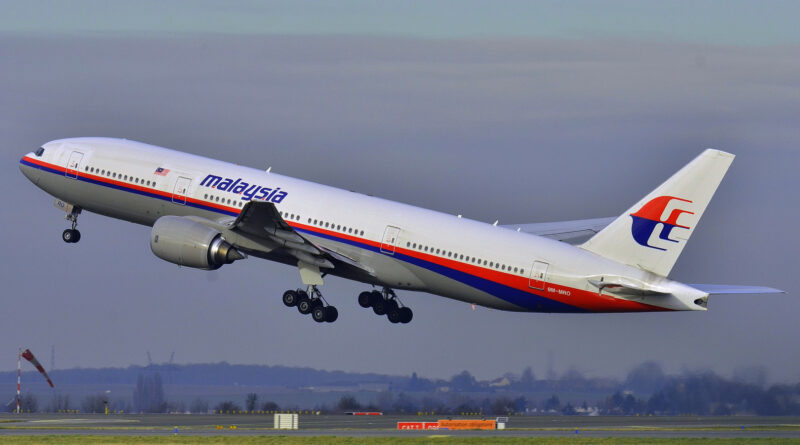Malaysia Airlines Flight 370 Disappearance in the Southern Indian Ocean
On March 8, 2014, the world was gripped by one of aviation’s most enduring mysteries—the disappearance of Malaysia Airlines Flight 370. This passenger flight, bound for Beijing from Kuala Lumpur, vanished from radar less than an hour after takeoff, leaving behind a trail of unanswered questions and a legacy of sorrow and intrigue. The ensuing search, conducted over vast stretches of the southern Indian Ocean, became one of the most extensive and expensive efforts in modern aviation history. This article delves into the background, timeline, search operations, investigations, and the many theories that have emerged in the wake of the disappearance, shedding light on the complexities of modern air travel, the challenges of oceanic search and rescue, and the profound impact on the families and communities involved.
The Fateful Flight
Malaysia Airlines Flight 370 (MH370) was operated by a Boeing 777-200ER, carrying 239 passengers and crew from diverse international backgrounds. The flight departed Kuala Lumpur International Airport at 00:41 local time on March 8, 2014. Shortly after takeoff, while cruising at an altitude of around 35,000 feet, the aircraft lost contact with air traffic control. Within a short period, the plane’s transponder was switched off, and all communications ceased, plunging the flight into an enigma that has puzzled experts for over a decade.
The disappearance was not only a technical challenge but also a human tragedy. Families of the passengers and crew, as well as the global community, were thrust into a state of uncertainty and grief as details about the flight’s final moments emerged piecemeal, fueling speculation and conspiracy theories.
Initial Communication Loss
In the moments following takeoff, Flight 370 was expected to follow a routine route over the South China Sea. However, soon after passing through Malaysian airspace, the aircraft deviated from its planned course. The loss of contact with the cockpit and the subsequent shutdown of the transponder raised immediate concerns. Despite extensive radar and satellite data analysis, the precise moment and nature of the deviation remained shrouded in mystery.
The aircraft’s communication systems, including its ACARS (Aircraft Communications Addressing and Reporting System), were disabled, further complicating the initial search efforts. This sudden loss of connectivity prompted immediate action from both Malaysian authorities and international aviation agencies, who were unprepared for the scale of the ensuing investigation.
The Southern Indian Ocean: A Vast and Inhospitable Search Area
The southern Indian Ocean, a remote and largely uncharted expanse, became the focus of the search efforts. Characterized by its immense size, unpredictable weather patterns, and deep underwater topography, the region presented enormous challenges for search and rescue operations. The ocean’s depths, combined with the absence of any reliable debris signals in the early days, meant that the search teams had to rely on indirect satellite data and drift modeling to narrow down the probable location of the aircraft.
Over time, the search area was refined based on data provided by Inmarsat’s satellite communications. These “handshakes” between the aircraft and a satellite suggested that the plane had flown for several hours after contact was lost, covering a distance that led investigators to focus on a remote part of the Indian Ocean where conventional radar and search technologies struggled to operate effectively.
Timeline of Key Events
The timeline of MH370’s disappearance is marked by rapid developments and subsequent setbacks:
- Departure and Early Flight: At 00:41 local time on March 8, 2014, Flight 370 departed from Kuala Lumpur. Initial communications were normal, and the aircraft maintained its scheduled route for the first few minutes of flight.
- Communication Loss: Approximately 38 minutes into the flight, the aircraft lost contact with air traffic control. Shortly thereafter, the transponder was switched off, leaving the aircraft invisible to conventional radar tracking systems.
- Satellite Data Analysis: In the hours following the loss of contact, Inmarsat’s satellite data revealed a series of automated “handshakes” between the aircraft and the satellite network. Analysis of these signals allowed investigators to deduce that the plane had likely continued flying for another six to seven hours.
- Initial Search Efforts: In the immediate aftermath, search and rescue operations commenced in the South China Sea. However, as new data pointed towards the southern Indian Ocean, the focus of the search shifted dramatically.
- Expansion of the Search Area: Over the following months, a multinational coalition of experts, agencies, and navies embarked on what would become one of the largest and most complex search operations ever mounted in modern history. The search area expanded to cover over 120,000 square kilometers of the Indian Ocean.
- Intermittent Discoveries: While several pieces of debris later confirmed to be from MH370 were found washed ashore on islands in the western Indian Ocean, the main wreckage of the aircraft has never been located.
The Multinational Search Effort
The search for MH370 was unprecedented in scope and complexity. Countries from around the world—led by Australia, which managed the underwater search in the Indian Ocean—contributed ships, aircraft, and cutting-edge technology in the hope of finding the missing plane.
Coordination and Challenges
The search operation involved collaboration among multiple nations, including Malaysia, Australia, China, the United States, and several European countries. The coordination was managed through international bodies and aviation safety organizations, each contributing specialized skills ranging from oceanography to deep-sea technology. Despite these combined efforts, the operation faced numerous challenges:
- Harsh Environmental Conditions: The southern Indian Ocean is notorious for its rough seas, unpredictable weather, and extreme depths. These factors severely hampered the ability of search teams to maintain continuous coverage of the designated search areas.
- Technological Limitations: While modern sonar and underwater mapping technologies were deployed, the vastness of the search area meant that even the most advanced equipment struggled to cover every square kilometer. The intermittent nature of debris findings further complicated the search, leading to debates over the most effective strategies for underwater detection.
- Logistical Complexities: Coordinating among multiple international agencies, each with its own protocols and equipment, created logistical challenges that at times slowed down the progress of the search.
Underwater Search and Sonar Mapping
One of the key technological challenges was the underwater search. Autonomous underwater vehicles (AUVs) equipped with side-scan sonar were deployed to map the ocean floor in the suspected crash zone. Despite extensive mapping efforts, the sheer scale of the area and the presence of underwater features such as deep-sea trenches and rugged terrain meant that locating the aircraft’s remains was like searching for a needle in a haystack.
Innovative search techniques, including the use of sonar imagery and deep-water remotely operated vehicles (ROVs), were employed to enhance the chances of detection. Yet, even with these advances, the elusive wreckage of MH370 continued to evade discovery.
Investigations and Theories
The disappearance of MH370 has sparked numerous investigations and generated a wide range of theories, each attempting to explain the inexplicable.
Official Investigations
The Malaysian government, in conjunction with international aviation authorities, initiated a formal investigation immediately following the disappearance. These investigations focused on several key areas:
- Flight Data Analysis: The analysis of satellite communications and radar data played a central role in narrowing down the possible flight path. Inmarsat’s “handshake” signals, though indirect, provided crucial information about the duration and direction of the flight after contact was lost.
- Crew and Passenger Backgrounds: Investigators meticulously reviewed the backgrounds of the crew and passengers, seeking any clues that might indicate deliberate actions or unexpected technical failures. This included scrutinizing the pilots’ flight records, personal histories, and any possible links to extremist groups or intentional hijacking scenarios.
- Technical and Mechanical Examinations: Although the aircraft was never found, experts examined similar models of the Boeing 777 to identify potential mechanical or technical failures that could have contributed to the loss of communication and subsequent disappearance.
Conspiracy Theories and Speculations
The absence of concrete evidence has inevitably led to a proliferation of conspiracy theories and speculative explanations. These theories range widely, including:
- Hijacking or Terrorism: Some theories suggest that the aircraft was deliberately taken off course by hijackers or terrorists. Proponents argue that the sophisticated manner in which the plane was steered off its course indicates a level of planning and technical expertise that would be difficult to achieve by accident.
- Pilot Involvement: Another prominent theory centers on the possibility of pilot involvement, either as an act of deliberate sabotage or as a tragic decision born out of personal crisis. Investigators have examined the flight simulator data and personal communications of the pilots, though no conclusive evidence has ever substantiated these claims.
- Mechanical Failure or Catastrophic Event: There are also theories that propose a sudden mechanical failure or catastrophic event—such as an onboard fire or structural failure—forced the aircraft to continue flying on autopilot until it exhausted its fuel supply, ultimately crashing into the ocean.
- Cover-Up or Government Involvement: Some more controversial theories suggest that there may have been a cover-up involving governmental or military agencies. These theories are fueled by the perceived lack of transparency and the numerous unanswered questions that have persisted throughout the investigation.
Despite extensive investigations and numerous theories, no single explanation has achieved universal acceptance. The mystery of MH370 remains one of the most puzzling incidents in aviation history, with each new piece of evidence opening the door to further questions rather than definitive answers.
The Human Impact
Beyond the technical and investigative challenges, the disappearance of MH370 has had a profound and lasting impact on the families of those aboard the flight, as well as on the global community.
Grief and Uncertainty
For the families of the 239 passengers and crew, the disappearance has resulted in an enduring state of limbo. The lack of closure and the absence of the aircraft’s wreckage have left families grappling with unanswered questions and an ongoing sense of grief. Many relatives have expressed frustration over the slow pace of the investigation and the difficulty in obtaining clear, conclusive answers about what really happened on that fateful night.
Global Response and Media Coverage
The extensive media coverage of MH370’s disappearance brought the tragedy into the global spotlight. News outlets around the world reported on every development, and the case quickly became a symbol of the vulnerabilities inherent in modern air travel. The relentless media attention has not only kept the memory of the lost flight alive but has also pressured governments and international agencies to continue searching for answers despite the many obstacles.
The Long Road to Acceptance
The human toll of the disappearance extends far beyond the initial shock and confusion. Over the years, families have had to navigate the complexities of legal battles, compensation claims, and public memorials. The ongoing mystery has spurred advocacy for improved aviation safety standards and better support systems for families affected by air disasters. In many ways, the legacy of MH370 is as much about the resilience of the human spirit as it is about technological and procedural shortcomings.
Technological and Operational Lessons
The disappearance of MH370 has had far-reaching implications for aviation safety and operational protocols worldwide.
Advances in Tracking Technology
One of the most significant lessons learned from the MH370 case has been the need for enhanced aircraft tracking technologies. The incident highlighted the limitations of traditional radar systems and the importance of continuous, real-time tracking for commercial flights. In response, the aviation industry has explored new technologies such as real-time satellite-based tracking and improved data transmission systems that could help prevent similar mysteries in the future.
Improvements in Communication Protocols
The abrupt loss of communication from MH370 underscored the critical importance of maintaining open channels between aircraft and ground control. Regulatory bodies have since revisited communication protocols and emergency procedures to ensure that future flights can better withstand unexpected disruptions. This includes redundant communication systems and improved training for pilots in handling in-flight emergencies.
Enhanced Search and Rescue Operations
The operational challenges faced during the MH370 search have spurred significant advancements in search and rescue (SAR) operations. Innovations in underwater robotics, sonar mapping, and data analysis have been accelerated as agencies around the world work to refine their techniques for locating missing aircraft in remote and challenging environments. The lessons learned from MH370 are being integrated into international standards and protocols to ensure that future SAR efforts are more effective and efficient.
Investigative Challenges and International Cooperation
The investigation into the disappearance of MH370 has been a monumental international effort, characterized by both unprecedented cooperation and significant challenges.
Multinational Collaboration
From the onset, the investigation involved multiple countries, each contributing resources, expertise, and technology. Australia, Malaysia, China, and several European nations played key roles in analyzing satellite data, conducting underwater surveys, and processing radar imagery. This multinational collaboration was critical in narrowing down the possible search areas and developing models that could predict the aircraft’s likely trajectory.
Challenges in Data Interpretation
Interpreting the available data was one of the most complex aspects of the investigation. The satellite “handshake” signals, while invaluable, provided limited information about the aircraft’s precise location. Analysts had to rely on a combination of mathematical models, ocean drift analysis, and historical weather data to piece together a plausible flight path. This intricate process underscored the inherent challenges of investigating an event where direct evidence is scarce and indirect signals must be carefully scrutinized.
Political and Bureaucratic Hurdles
The MH370 investigation was not without its political and bureaucratic obstacles. Differing national interests, concerns over aviation security, and the sheer scale of the search area contributed to delays and disagreements among the involved parties. Despite these challenges, the international community persisted in its efforts, driven by a collective desire to uncover the truth behind one of the greatest aviation mysteries of our time.
Theories and Speculations: A Spectrum of Possibilities
The absence of a definitive explanation for MH370’s disappearance has given rise to a wide array of theories and speculations, each seeking to fill the void left by missing evidence.
The Deliberate Act Theory
One of the most widely debated theories suggests that the disappearance of MH370 was a deliberate act, possibly involving one or more of the crew members. Proponents of this theory argue that the aircraft’s sudden deviation from its planned route, coupled with the methodical shutdown of communication systems, indicates a premeditated effort. Investigators have examined the flight simulator data and personal histories of the crew, though conclusive evidence to support this theory has never been publicly disclosed.
The Mechanical Failure Hypothesis
Another prevailing theory is that a catastrophic mechanical failure or onboard fire incapacitated the crew, forcing the aircraft to continue flying on autopilot until it eventually ran out of fuel. This hypothesis posits that a critical failure in one of the aircraft’s systems led to a gradual loss of control and eventual descent into the ocean. While some technical analyses lend credence to this possibility, the absence of recovered wreckage means that definitive conclusions remain elusive.
The Hijacking and Terrorism Angle
Speculation has also centered on the possibility that MH370 was hijacked, either by terrorists or rogue elements within the aviation industry. This theory is bolstered by the aircraft’s unexpected change in direction and the subsequent disappearance of communication. However, despite extensive investigations, no terrorist group has ever claimed responsibility, and no concrete evidence has been found to support a hijacking scenario.
Conspiracy Theories and Government Involvement
Beyond these mainstream theories, a multitude of more controversial ideas have circulated in the public domain. Some conspiracy theorists have suggested that governments or intelligence agencies might have been involved in a cover-up, possibly to hide sensitive military operations or classified information. These theories are typically fueled by perceived inconsistencies in official statements and the prolonged secrecy surrounding certain aspects of the investigation. Nevertheless, no credible evidence has emerged to substantiate these claims, and they remain largely speculative.
The Role of Media and Public Perception
The disappearance of MH370 has not only been a subject of intense technical and investigative scrutiny but has also captivated the public imagination. Media coverage played a pivotal role in shaping public perception, often blurring the lines between factual reporting and speculative commentary.
Continuous News Cycles
From the moment Flight 370 disappeared, news outlets worldwide provided continuous coverage, often highlighting the most dramatic and uncertain aspects of the case. This round-the-clock reporting kept the mystery in the public eye, but it also led to the rapid spread of unverified theories and misinformation. The challenge for journalists was to balance the need for timely updates with the responsibility of accurate, evidence-based reporting.
Documentaries and In-Depth Reports
In the years following the disappearance, numerous documentaries, investigative reports, and in-depth articles have explored every conceivable aspect of the MH370 mystery. These media pieces have examined everything from the technical details of the aircraft’s flight path to the emotional toll on the families left behind. While some of these reports have contributed valuable insights, others have been criticized for sensationalizing the tragedy or presenting unverified claims as fact.
Social Media and Public Discourse
Social media platforms became a fertile ground for discussions about MH370, allowing individuals from around the world to share their theories, insights, and personal stories. Online forums and discussion boards hosted heated debates, with some users presenting elaborate reconstructions of the flight’s final hours based on available data. Although this crowdsourced analysis occasionally yielded interesting perspectives, it also highlighted the dangers of relying on unverified information in a rapidly evolving investigation.
The Impact on International Aviation Safety
The unresolved fate of MH370 has had a profound impact on global aviation safety protocols, prompting a reevaluation of tracking, communication, and search and rescue strategies.
Enhanced Tracking Requirements
In the wake of MH370, international aviation bodies and regulatory authorities have moved to implement more robust tracking systems. The goal is to ensure that commercial aircraft are continuously monitored throughout their flights, particularly over remote and uninhabited areas such as the southern Indian Ocean. These measures include the adoption of real-time satellite-based tracking systems and mandatory reporting protocols to reduce the risk of another “vanishing” aircraft.
Improved Communication Systems
The disappearance exposed critical vulnerabilities in aircraft communication systems, especially in scenarios where communication channels might be deliberately or inadvertently disabled. In response, airlines and manufacturers have explored new technologies designed to maintain constant communication between the cockpit and ground control, even in the event of system failures. These advancements aim to provide an additional layer of safety and early warning, potentially preventing similar incidents in the future.
Revisiting Search and Rescue Operations
The MH370 case has led to significant investments in search and rescue (SAR) technology and methodology. International agencies have collaborated on developing better underwater detection equipment, including enhanced sonar mapping techniques and autonomous underwater vehicles (AUVs) capable of operating in the extreme conditions of deep ocean environments. These improvements are expected to make future search operations more efficient and effective, reducing the time and cost involved in locating missing aircraft.
Ongoing Investigations and Future Prospects
Despite the extensive efforts made over the years, the disappearance of MH370 remains unresolved. The search operations have been suspended and resumed multiple times, with each phase yielding new insights yet leaving many questions unanswered.
The Role of New Technology
As technology continues to advance, there remains hope that new methods of data analysis and underwater exploration may eventually lead to the discovery of MH370’s wreckage. Researchers are continually refining models that predict the aircraft’s drift patterns and underwater movements, leveraging machine learning and big data analytics to sift through the massive amounts of information collected during the search operations.
International Collaboration Moving Forward
The lessons learned from the MH370 investigation have fostered stronger international cooperation in aviation safety and search operations. Countries are now more willing to share data, resources, and technological innovations to prevent future tragedies. This collaborative spirit is a silver lining in an otherwise somber chapter of aviation history, and it underscores the global commitment to enhancing air travel safety.
The Psychological and Cultural Legacy
Beyond the technical and procedural changes, the MH370 disappearance has left an indelible mark on popular culture. It has become a symbol of modern mystery, inspiring books, documentaries, and a plethora of online discussions. The enduring public interest serves as a reminder of the human need to find meaning in tragedy and to seek closure, even when definitive answers remain elusive.
Lessons Learned and Reflections
The tragedy of MH370 has forced aviation authorities, governments, and the global community to confront difficult questions about safety, accountability, and the limits of human technology in the face of nature’s vast and unpredictable challenges.
A Wake-Up Call for the Aviation Industry
For the aviation industry, MH370 has served as a stark reminder that even the most advanced technologies and rigorous protocols can fail under extraordinary circumstances. The incident has sparked a comprehensive review of safety measures, emergency response strategies, and communication protocols. Airlines and regulatory bodies alike have pledged to implement lessons learned from this tragedy, reinforcing the commitment to passenger safety and operational transparency.
The Human Cost of Uncertainty
At its core, the story of MH370 is one of human loss and enduring uncertainty. The pain experienced by families who have never received definitive answers is immeasurable. Their resilience in the face of prolonged grief has brought attention to the need for improved support systems and better communication strategies during times of crisis. The tragedy has also galvanized advocacy for more transparent investigations and greater accountability in how such disasters are managed.
Continuing the Search for Answers
While the physical search for MH370 has faced significant setbacks, the quest for understanding continues in academic, technical, and emotional realms. Researchers, investigators, and enthusiasts around the world continue to analyze available data, hoping that future discoveries may finally unravel the mystery. This ongoing pursuit of truth embodies the relentless human spirit of inquiry and the enduring need to find closure in the wake of inexplicable loss.
Conclusion
The disappearance of Malaysia Airlines Flight 370 on March 8, 2014, over the vast and unforgiving southern Indian Ocean remains one of the most confounding mysteries in aviation history. Despite extensive search efforts, international investigations, and the application of cutting-edge technology, the final resting place of the aircraft—and the full story behind its disappearance—continues to elude discovery. The tragedy has not only reshaped aviation safety protocols but also left a lasting impact on the families affected, the global community, and the way we understand and manage risks in modern air travel.
The legacy of MH370 is one of both profound sorrow and relentless determination. As technology advances and international collaboration deepens, there remains hope that one day the mysteries of that fateful night will be resolved. Until then, the disappearance of MH370 serves as a somber reminder of the limits of human control in an unpredictable world and as a catalyst for continued improvements in aviation safety and search operations.
Discover more from City Towner
Subscribe to get the latest posts sent to your email.




